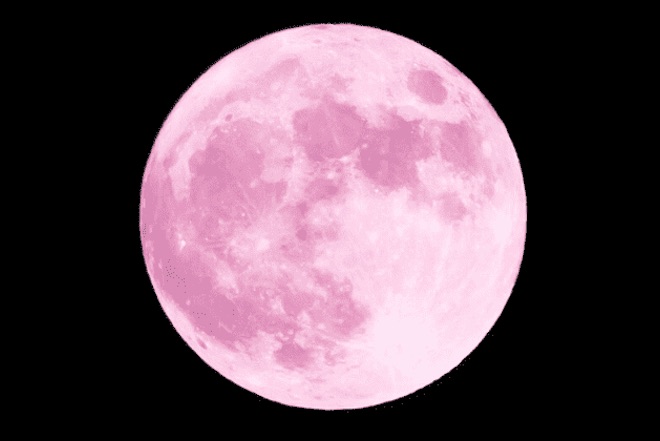And then there is the perigee – when the Moon is closest to the earth. As it is a monthly event, whoop-dee-doo, right? Not this year. Any excuse to get outdoors will do. How many of us stared at the night sky on July 20, 1969, almost 51 years ago? Millions upon millions and for the conspiracy theorists new fodder. (Just as with today’s coronavirus). The difference being you better have a reason for standing outdoors staring at the vast galactic expanse at 2 am.
The internet is useful for arcana, not necessarily truth and facts. The slimster likes a site that focuses on constellations, comets and, of course any new, rare Moon news. So it was with pleasure that the lean, mean, lunar machine read online about the Super Pink Moon. Super Moons happen often, but this one, to be seen on the night of April 7, wee hours of April 8 was to be a Super (because of its enlarged state) Pink Moon. So named for at that time pink phlox is in bloom and the orb also has a slightly roseate face. Or is that the man in the Moon after a couple of stiff ones, the prankster is not sure. Phloxed if he knows.
Then there is the colour factor....
Become a subscriber to continue reading!
Every week we bring you news from the community and exclusive columns. We're relying on your support to keep going and invite you to subscribe.
Starting from $2.30 per week.




